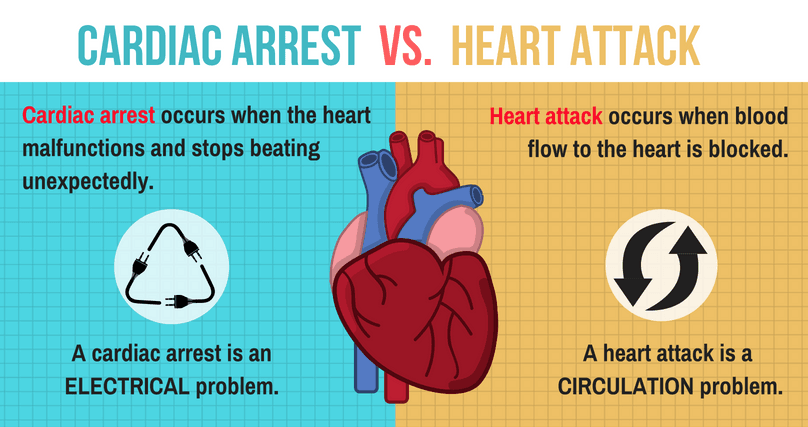
Be prepared this holiday season with the gift of knowledge to save a life. It is reported by the American heart association that cardiac deaths is almost 5% higher during the holidays. Heart attack and sudden cardiac deaths are under the umbrella of this statistic. Let’s talk about the differences.
Heart Attacks
Think of your heart, arteries and veins as a big interlocking tube system that has a pump bringing oxygen and other nutrients through the body. This interlocking tube system can get clogged just like water pipes or plumbing in a home. When this happens there is a decrease in oxygen and other nutrients that is supplied to the area. In a heart attack, the location of the clog is in the interlocking tubes that feed your heart. This blockage(s) leads to decreased oxygen to the muscle tissues of the heart which leads to such symptoms such as:
sweating
chest pain
arm heaviness
jaw pain
These symptoms are a medical emergency so call 911 right away! Typically, a person is still conscious when experiencing these symptoms unless it is left untreated. If these symptoms are left untreated it could lead to cardiac arrest, this is when the heart (the pump), stops working. Let’s talk about sudden cardiac arrest.
Sudden Cardiac Arrest
A sudden cardiac arrest is when the heart (the pump) stops suddenly. The pump in the interlocking tube system stops completely. This leads to a cessation the flow of oxygen and nutrients all throughout the whole body. Some of the causes of sudden cardiac arrest are reviewed in “What is Sudden Cardiac Arrest?" One of the primary causes of sudden cardiac arrest is arrhythmia, an electrical dysfunction of the heart. The symptoms of a sudden cardiac arrest equal death and is a MEDICAL EMERGENCY! These include:
Sudden collapse
No pulse
No breathing
Loss of consciousness
911 should be called right away and chest compressions should start immediately. If available, apply an AED (automated external defibrillator) while waiting for EMS to arrive.
To recap, a heart attack is a blockage to one or more tubes that feed the pump, a circulation problem. The person may still be conscious, and heart may still be pumping supplying nutrients to the rest of the body. In sudden cardiac arrest however, it is a sudden stop to the pump, an electrical problem, which leads to oxygen and nutrient delivery cessation to the whole body. To be best equipped this holiday season, consider taking a CPR course with Starting hearts.
References
American Heart Association: https://www.ahajournals.org/doi/full/10.1161/01.CIR.0000151424.02045.F7 ·
American Heart Association: https://www.heart.org/en/health-topics/heart-attack/about-heart-attacks ·
Mayo Clinic https://www.mayoclinic.org/diseases-conditions/sudden-cardiac-arrest/symptoms-causes/syc-20350634 · 911 image: https://www.melrosewakefield.org/news/five-things-to-know-about-sudden-cardiac-arrest/
American Heart Association https://www.heart.org/en/health-topics/cardiac-arrest/about-cardiac-arrest
